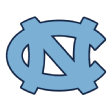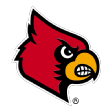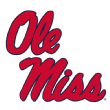What is always the busiest and, in some ways, most consequential day of Champ Week became even busier and more consequential on Thursday morning. Our colleague Jeff Borzello confirmed an earlier report from Stadium: Duke would withdraw from the ACC tournament due to a positive COVID-19 test.
The first impact of the news, of course, has zero to do with basketball and everything to do with health and safety. A wish for good health, peace of mind and, where need be, a rapid and complete recovery goes out not only to the Duke players and staff but also to the Louisville and possibly even Boston College programs as well. In the 48 hours before the news broke, the Blue Devils won games against both the Cardinals and the Eagles.
Next comes the discussion of what this does to the postseason. In Duke’s case, the news couldn’t have come at a more inopportune time. The Blue Devils were rising steadily in the mock brackets and a potential win against Florida State in the ACC quarterfinals could have put Mike Krzyzewski’s team in the thick of the discussion.
Instead, Duke’s ascent has been stopped cold at roughly the “next four out” level of the bubble. Unless there are further developments of which we are unaware at the present time, there will be no NCAA tournament for the Blue Devils. If that is indeed the case, it will be the first time since 1995 that the event has been played without Duke and without Coach K.
Past the direct consequences for the Blue Devils, the bubble and, ultimately, the NCAA tournament field will doubtless take on much the same appearance that they have always presented. Obviously, the Seminoles will now advance directly to the ACC semifinals. Leonard Hamilton’s team, however, is already a tournament lock and appears headed for something in the neighborhood of a No. 5 or possibly No. 4 seed in any event.
Ultimately, the news from Duke is a bolt from the non-basketball blue, one that puts a definitive end to a tournament streak that was already in peril. While trusting that everyone involved emerges from this setback in good health, the day will doubtless be remembered as yet one more remarkable occurrence in a season filled with unprecedented scenes.
Here’s our current projection of the bubble:
Bids from traditional one-bid leagues (minus the Ivy): 20 teams
Locks: 32 teams
The bubble: 24 teams for 16 available spots
Should be in: 7 teams
Work to do: 17 teams
ACC | Big 12 | Big East | Big Ten | Pac-12 | SEC | American | Others
ACC
Locks: Virginia, Florida State, Clemson
Should be in

The day before a scheduled home game against Louisville, Virginia Tech announced that the contest was canceled due to a COVID-19 “contract-tracing review” in the Hokies’ program. The news landed at a time when Mike Young’s team was coming off a dominant 38-point win over Wake Forest. Virginia Tech is projected as a No. 8 seed. Bubble Watch HQ sends best wishes to the Hokies for good health and a return to action sooner rather than later.

Having made its way safely past Notre Dame and into the ACC quarterfinals, North Carolina is now looking at a bracket of opportunity. The Tar Heels are paired with Virginia Tech, an opponent that hasn’t played basketball since Feb. 27. Even if the Hokies show zero signs of rust, however, a fair number of laptops would still rate UNC as a slight favorite in that one. The winner of that game will advance to face a semifinal against either Florida State or Duke, both of whom North Carolina has defeated in the past two weeks. Put simply, the Tar Heels have been given a good chance to improve the projected No. 10 seed they’re carrying in mock brackets. UNC will be in an even better position to seize that chance when Garrison Brooks returns to action. Brooks sat out the Notre Dame game after he injured his ankle in the season finale against Duke.
Work to do

When Louisville took the floor against Duke in the ACC tournament, the Cardinals were projected as possibly the highest or second-highest No. 11 seed in the field. If that projection had value, Chris Mack’s men had a cushion of six or seven teams underneath them in the bracket. So, how far does a 14-point loss to the Blue Devils on a neutral floor drop the Cards? You would think the answer to that would be a number smaller than six or seven. The game goes in the books as a Quad 2 loss, not a point of pride, certainly, but not catastrophic, either. Yes, you would think the loss would drop Louisville fewer than six or seven lines. But if the initial projection was off or if a bid thief or two emerges, things could become tense for the Cards just the same.

Anyone wondering how a team should go about playing its way into the tournament would do well to study Georgia Tech. Following victories over Virginia Tech, Syracuse and Duke, the Yellow Jackets went from “first four out” status to a projected No. 11 seed in the space of just three days. Josh Pastner’s team closed out its regular season with a 12-point win at Wake Forest, and the final numbers from conference play testify to a dramatically improved offense led by Moses Wright and Jose Alvarado. Georgia Tech is within striking distance of the program’s first NCAA appearance in 11 years.

Jim Boeheim’s men survived and advanced, both as ACC tournament entrants and, perhaps more importantly, as a bubble team trying to play its way into the field of 68. The Orange easily defeated NC State 89-68 and will now face Virginia. In other words, the bracket really couldn’t have lined up any better for Syracuse. Any team advancing to the ACC quarterfinals had a 50-50 shot at drawing either Virginia Tech or Georgia Tech. Fine teams, certainly, but with NET rankings hovering around No. 40, the Hokies and Yellow Jackets can’t necessarily give a bubble team the lift it requires to make the jump into the field. The Cavaliers, on the other hand, can be found in the top 15 nationally in NET terms and thus represent the most valuable neutral-floor win opportunity at the ACC tournament. With Syracuse being shown on the “first four out” list, a victory over the ‘Hoos should push the Orange into the projected field. Staying there until Selection Sunday will be a separate but nice discussion to have for SU.

Big 12
Locks: Baylor, Oklahoma, West Virginia, Texas, Kansas, Texas Tech, Oklahoma State
Oklahoma State is shown here as a “lock” to make the tournament. OSU is appealing an NCAA ruling that would prohibit the men’s basketball team from postseason play. As long as that appeal is still under consideration by the NCAA, this season’s team would be allowed to participate in the tournament.

Big East
Should be in

Now that Villanova is trying to find its way without the injured Collin Gillespie and Creighton is dealing with a coaching suspension, there’s a fair possibility the best team in the Big East at this moment is UConn. The Huskies have been blowing opponents off the floor, with the latest example being a 98-82 dismantling of Georgetown in Storrs. With their Big East season completed, Dan Hurley’s men can lay claim to easily the league’s best defense as well as an increasingly dominant scorer in James Bouknight. Purveyors of mock brackets have noted all of the above, and in the space of eight days UConn ascended from the No. 12 line to a No. 9 seed. Some unlucky top seed could get more than it bargained for in the round of 32 from the Huskies.
Work to do

The Musketeers were being shown as literally the last team in the field of 68 when they lost in overtime to Butler in the first round of the Big East tournament. As for the Bulldogs, they took the floor at Madison Square Garden at No. 117 in the NET rankings, making this a Quad 3 loss for Travis Steele’s team. In other words, barring only the most unexpected spasm of committee wackiness in recent memory, Xavier’s at-large hopes are dead. The Big East tournament has not been very kind to the Musketeers these past few years, and that streak has continued in 2021.

The wheels have come off at Seton Hall. Consecutive losses at Georgetown, at Butler, at home to UConn and at St. John’s have dropped the Pirates to 13-12. Kevin Willard’s team had already been pushed out of the projected field prior to the 10-point loss in Queens, and the slide down the pecking order of bubble teams will now continue. Wins recorded in December at Penn State and Xavier still qualify as Quad 1s. But the one game that’s keeping the Pirates anywhere near this discussion is the 80-73 victory they recorded at UConn one month ago (a contest in which, to be sure, James Bouknight did not play for the Huskies).

You just can’t keep St. John’s out of Bubble Watch. Six straight wins landed the Red Storm here in early February. Then three losses in four games earned them a brief period of invisibility around these parts. Now, Mike Anderson’s men are back, thanks to victories at home over Providence and fellow bubble aspirant Seton Hall. Wins on the road at UConn and at home over Villanova give this profile enough heft to get St. John’s in the conversation. Yet there’s work to be done at the Big East tournament.

Big Ten
Locks: Michigan, Ohio State, Illinois, Iowa, Wisconsin, Purdue
Should be in

Nothing helps a struggling bubble team quite like a struggling opponent that has already played its way out of at-large contention. Rutgers appeared to be in a bit of bracket peril after a profile-damaging 21-point loss at Nebraska capped off a stretch of three defeats in four outings. But Steve Pikiell’s men managed to pick up an overtime win at Minnesota in the season finale. The Scarlet Knights were being projected as a No. 10 seed at tipoff, which suggests that the program has indeed secured its first NCAA tournament bid in 30 years. An 0-1 showing by Rutgers at the Big Ten tournament, for example, would not appear to be a bid-stopper if, as seems plausible, the winning team in that game is a NET top-75 opponent.

If you had somehow been deprived of all college basketball scores and news for the entire season only to be shown Michigan State’s record for the first time today, you might well say something like: “Wow, down season, but now Tom Izzo will probably make the Final Four as a No. 11 seed.” The Spartans have played no fewer than 13 Quad 1 games and won four of them. That’s not a great winning percentage, but when you beat Michigan, Illinois and Ohio State, you will get the committee’s attention. Mock brackets were already showing MSU as one of the last four teams in the field before its win at home over the Wolverines. Then, in the wake of that victory, Joe Lunardi promoted Michigan State to “last four byes.” Bubble Watch isn’t ready to call the Spartans a lock, but Izzo’s men have certainly earned their upgrade to “Should be in.”
Work to do

The Terrapins’ position in mock brackets deteriorated with remarkable speed after losses at Northwestern and at home against Penn State. In the final week of the regular season, Mark Turgeon’s team was briefly projected as a No. 8 seed. Now Maryland’s in real danger of missing the tournament entirely, and the Big Ten bracket certainly does the Terps no favors. Up next for this team is Michigan State. In theory a loss to the surging Spartans does zero damage to one’s profile. True enough, but Maryland’s problem is its other damaging entries, most specifically being swept by the Nittany Lions. The wins at Illinois, at Wisconsin and at home against Purdue and MSU still look excellent, but say the Terps do in fact lose their next game: Is the committee going to hand a precious at-large bid to a 15-13 team? Possibly, but it would be best for Maryland not to find out.

Pac-12
Should be in

The Bruins have been shown as a No. 9 seed in mock brackets for three weeks, but that has now changed for the worse. Mick Cronin’s men closed the season by losing three in a row, and the most recent defeat, in particular, was a heartbreaker. USC’s Tahj Eaddy drained a 3 with one second left in Saturday’s game to lift the Trojans to a one-point win over their archrival at Pauley Pavilion. The end-of-season skid means this Bruins team is now projected as a No. 10 seed. That’s not the end of the world, of course, for a group that’s still comfortably in “Should be in” territory. It is, however, a different March outlook than the Bruins expected just three games ago.

SEC
Locks: Alabama, Arkansas, Tennessee, Missouri, Florida, LSU
Work to do

Yes, 15-10 Ole Miss has work to do at the SEC tournament. Plenty of work, in fact, but the Rebels should see this glass half full. At a time when six SEC teams are already locks at Bubble Watch and when both Alabama and Arkansas are being shown on the top three seed lines of mock brackets, this league offers ambitious bubble teams everything they could wish for in terms of quality opponents. The SEC is arguably stronger, top to bottom, than it has been in over a decade, meaning Ole Miss doesn’t have to fret about where it lands in the bracket: Take a spot anywhere and win some games.

American
Locks: Houston
Work to do

With a win at home over Houston to its credit, Wichita State entered mock brackets in the last week of February as one of the last teams in the field. The Shockers have maintained that position ever since, and, barring a bad loss at the American tournament, Isaac Brown’s group might not get an opportunity to improve its projected seed to any significant extent. Any rematch with the Cougars, for example, could take place in the American title game, in which case another “big” victory over Kelvin Samson’s team would also hand WSU the automatic bid.

Maybe someday in the far off future the committee will be replaced entirely by a metric that measures how difficult it would be to duplicate any team’s wins and losses given the opponents and venues where that record was compiled. When that happens and “strength of record” (SOR), “wins above bubble” (WAB) or something similar is in the driver’s seat, it will be good news for SMU. In a SOR world, the 11-4 Mustangs would be a No. 10 seed. In the real world, however, Tim Jankovich’s men rank in the high 50s on the NET and inhabit the far outer fringes of the bubble. Keep winning, SMU.

A spectacular finish at Houston may have finished off any at-large hopes for Memphis. The Tigers’ Boogie Ellis tied the game with a 3 with 1.5 seconds remaining. After a timeout, the Cougars then won on a buzzer-beating 3 off glass by Tramon Mark. When Mark’s game-winner cleared the net, mock brackets were showing Memphis as a member of the “next four out” list. That means Penny Hardaway’s team has work to do at the American tournament. This is the part where Bubble Watch usually says, “[Bubble Team X] can only face [Lock Y] in the title game, so anything short of an automatic bid won’t work.” Not true for Memphis! In what amounts to a really good break for the Tigers, the top seed in this bracket is Wichita State. That means No. 2 seed Houston, by far the strongest opponent in the field in NET terms, could be waiting for the No. 3 Tigers in the semifinals. Go strong in that quarterfinal, Memphis, and then let’s talk.

Others
Locks: Gonzaga, BYU, Loyola Chicago, San Diego State
Should be in

In the space of just 19 games played during a paused and shortened season, St. Bonaventure has made a commendably strong case for an at-large bid. Mark Schmidt’s team was already in the top 30 of the NET rankings before the Atlantic 10 tournament semifinal win over Saint Louis, and mock brackets were showing the Bonnies as a No. 10 seed. The decision over the Billikens goes into the books as a Quad 1 win, the team’s third this season against just two defeats. With each postseason victory, there will be more talk of Schmidt as a candidate for other positions (possibly Boston College). For now, St. Bonaventure will gladly take the “each postseason victory” half of that bargain.
Work to do

The Atlantic 10 title game is going to have a heavy major conference vibe, because it would appear that, win or lose, both VCU and St. Bonaventure will make the field of 68. The Rams are projected as a No. 11 seed, and the team has received a lift from the return of Bones Hyland, after he missed two games with an injured foot. The strong showing at the A-10 tournament has been a welcome turn of events for a program with unfinished postseason business. In 2019, VCU breezed through conference play at 16-2 only to lose to Rhode Island in the A-10 quarterfinals. The Rams were then given a No. 8 seed on Selection Sunday, and they lost by 15 in the round of 64 to UCF. Mike Rhoades’ current team has already outperformed that precedent in the conference tournament and will seek to do the same in the NCAA’s bracket.

The Bulldogs were being projected as one of the last three teams in the field at the final horn of their loss to Loyola Chicago in the Missouri Valley tournament title game. There is zero profile damage incurred in losing to a NET top-20 opponent such as the Ramblers on a neutral floor, so for the sake of discussion, say that Drake is still one of the last three teams in the theoretical field. There’s a good deal of basketball to be played between now and Selection Sunday, and Drake can earn an at-large bid if “first four out” teams fail to climb higher in the bracket. The Bulldogs do have one win over Loyola in three tries, a NET ranking in the top 50 and a 25-4 overall record. It’s going to be a close call for the committee, and the Bulldogs will quite rightly worry about each bid thief and every strong run by another bubble team.

The Rams ended their regular season with an 85-82 loss at Nevada after the Wolf Pack’s Grant Sherfield hit a 3-pointer in the final seconds. The outcome qualifies as a Quad 2 defeat, and it capped off an intense stretch run in which CSU played four games within seven days. Wins at home over Air Force (twice) and New Mexico were followed by the setback in Reno. Niko Medved’s team was projected as a No. 11 seed prior to the loss, and it’s probable Colorado State will now enter the Mountain West tournament forecast as one of the last teams in or first teams out of the field of 68.

After Craig Smith’s men lost two games at Boise State by a total of 13 points, the bubble outlook looked grim indeed. Then a funny thing happened. Projected Nos. 11 and 12 seeds started falling out of the bracket, while a few “first four out” and “next four out” programs also encountered difficulties in winning games. Meanwhile, USU was quietly taking care of business with three wins at home, two against Nevada and one against Wyoming. The Aggies then capped off this sequence with a come-from-behind victory at Fresno State in the season finale. This combination of faltering competitors and steady performance on Utah State’s part has lifted the Aggies back into the picture. The 50-something NET ranking still looks adequate, and the “sweep” of San Diego State (both games were played in Logan, Utah) is still impressive. USU has a chance.

The “Quad 4 loss on the second day of March” thing is not a good look. Boise State was being projected as a No. 11 seed before losing at home by three points to Fresno State. Now BSU’s tournament fate is very much open to question. Prior to the loss, the Broncos seemed as “safe” as a team on the No. 11 line can be, meaning Boise State had appeared in the consensus projected field every day over the course of the past month. That streak in the “fake” bracket will likely end, and the previously top-35 NET ranking will take a hit. BSU is very much in need of a strong showing at the Mountain West tournament.

After SLU’s loss to St. Bonaventure in the Atlantic 10 semifinals, coach Travis Ford said his team was looking to schedule a game in the coming week. The impulse to improve this profile is sound because, as it stands, there may not be enough here for a 14-6 team with a top-50 NET ranking to earn an at-large bid. The win over LSU is significant, of course, as is the regular-season win over the Bonnies in St. Louis. If the Billikens do come up short, however, one telling of the story could hold that even one win against VCU or one more against St. Bonaventure may have made a significant difference within the small number of games the Billikens played. So yes, schedule wisely, Coach Ford. In NET terms, the highest-ranked team that has already ended its season without realistic hope of a bid would appear to be Davidson. Just a suggestion.

